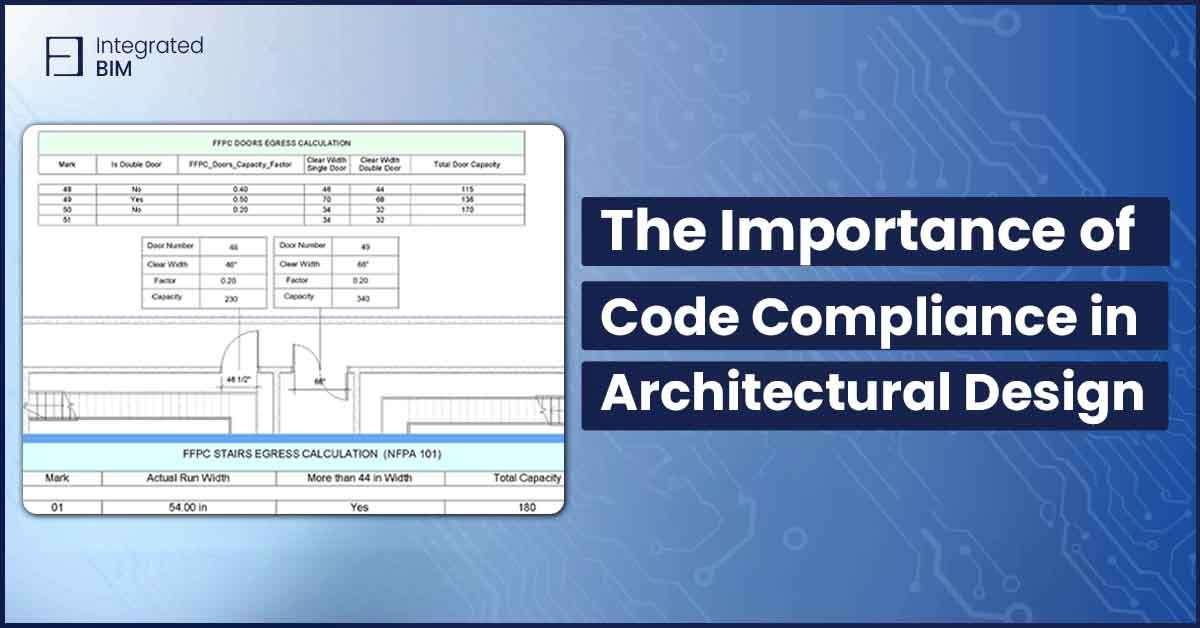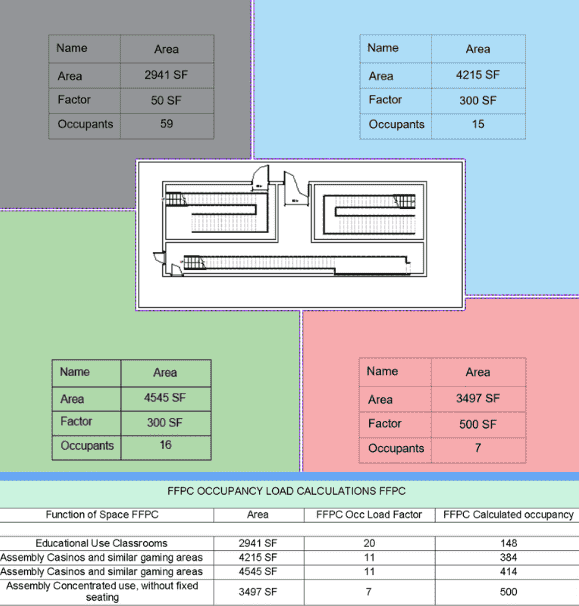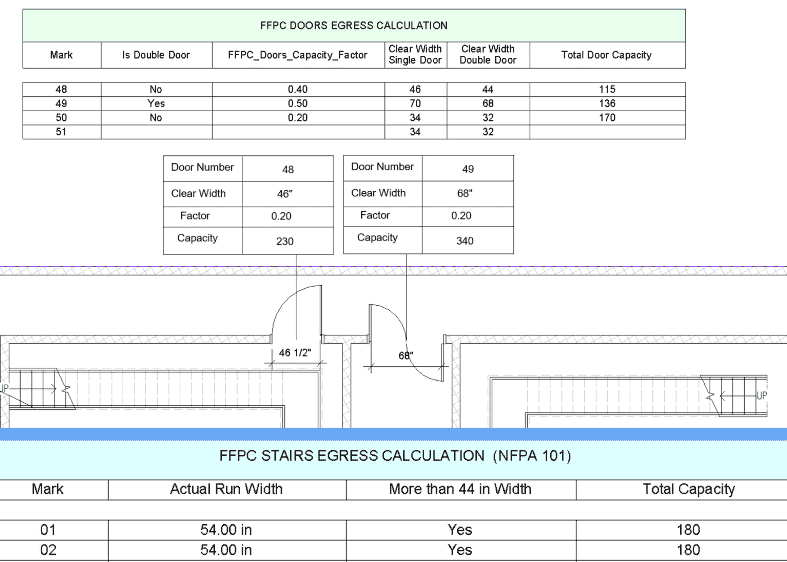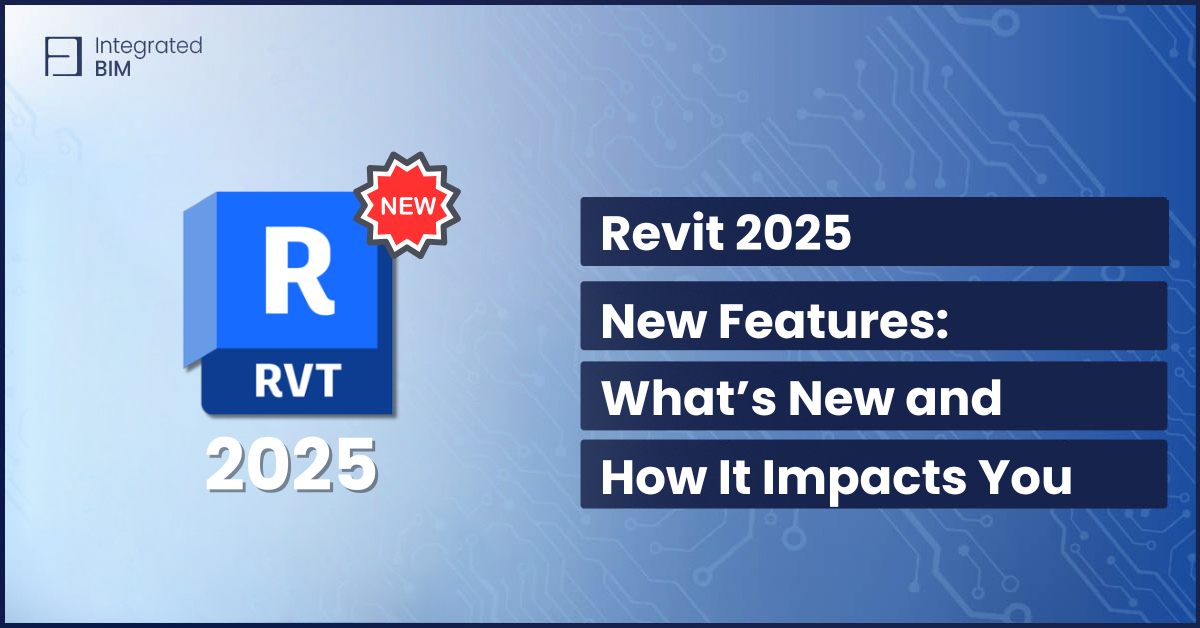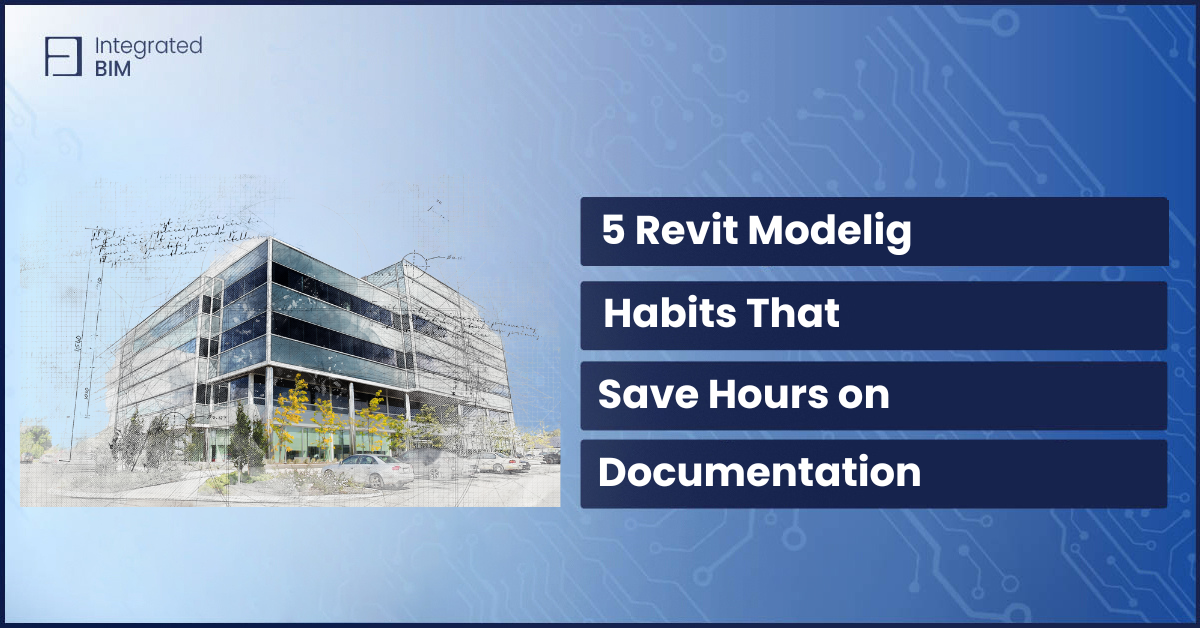Meeting compliance construction requirements in architectural design is extremely important. Building codes go beyond the notion of simply meeting regulatory requirements – it is fundamental to creating a safe, accessible, and fully functional environment. Advances in technology, particularly through Building Information Modeling (BIM), have revolutionized the way architects and building professionals integrate these critical standards into their designs.
BIM technology not only facilitates the seamless integration of compliance into the design and construction processes but also significantly increases accuracy and efficiency. This integration ensures that projects meet all required safety and accessibility standards from the outset, reducing the risk of costly and time-consuming changes later in construction. Using these advanced tools, professionals can focus more on the creative aspects of design while confidently navigating the complexities of regulatory requirements.
Understanding why building codes are important helps us appreciate their role in safeguarding public health, safety, and welfare by setting minimum standards for construction. On the other hand, the purpose of building codes is to provide a uniform guideline that architects, builders, and developers can follow to ensure their buildings are safe and sustainable for occupancy.
The Role of Compliance Construction Requirements in Architecture
Building codes are a fundamental framework in the construction industry designed to ensure that all structures provide a safe, sustainable, and accessible environment. These regulations are meticulously developed to cover a wide range of basic safety standards, including but not limited to structural integrity, fire safety measures, energy efficiency, and handicap accessibility features. Recognizing the importance of building codes is critical, as they are essential to protecting public health and enhancing quality of life.
They also have a significant impact on the architectural integrity and functional efficiency of buildings, ensuring that structures not only meet aesthetic standards but are sustainable and resilient in the face of environmental and urban demands. Through the application of these codes, architects, and developers are held to a high standard of accountability, encouraging innovation and diligence in design that is consistent with modern safety and environmental expectations.
Transform Compliance with Automated Solutions
In the quickly changing world of architecture design, integrating automated compliance tools like those offered in Autodesk Revit is revolutionizing how architects comply with building codes. These advanced tools are built directly into the design software, allowing architects to perform real-time compliance checks as they model. This seamless integration means that potential code violations can be identified and corrected during the initial design stages, significantly reducing the risk of costly post-construction changes.
For example, when an architect is designing a new commercial building, Revit’s automated systems can instantly analyze whether corridor widths meet local accessibility standards or whether the materials chosen comply with fire safety regulations.
This not only ensures that the building meets all relevant codes but also streamlines the workflow by reducing the number of revisions back and forth. By automating routine checks, such as occupancy calculations or escape routes, architects are free to focus more on the creative and functional aspects of design, confident that their designs comply with all regulations.
What’s more, the ability to program custom rules into these BIM tools allows firms to tailor compliance checks to specific project needs or jurisdiction codes, providing a flexible and reliable solution that adapts to a variety of scenarios. This adaptability is critical for large projects.
Practical Benefits of Automated Code Compliance in Revit
The integration of automated compliance features within Revit significantly enhances the practical workflow for architects, especially when dealing with complex regulatory requirements across various jurisdictions. For instance, Revit’s capability to perform automated occupancy calculations and egress analysis provides architects with real-time updates that reflect changes in design layouts or occupancy types instantly.
This means that if an architect adjusts the size or function of a room, Revit automatically recalculates the necessary egress paths and occupancy limits to ensure the design remains compliant with safety codes.
This functionality is particularly beneficial in projects like multi-use buildings or facilities with complex occupancy categories, where manual calculations can be prone to errors and extremely time-consuming.
Furthermore, Revit’s smart tagging feature can dynamically label room components with code-compliant details, such as fire-rating labels and exit signage, directly on the building model. This not only aids in maintaining consistency throughout the design documents but also ensures that all safety measures are visually represented, making it easier for both the design team and inspectors to verify compliance.
Revit allows for the customization of compliance checks to suit specific projects or local code requirements through its flexible programming interface. This enables firms to adapt the tool to support local norms and regulations without manual intervention for each project, streamlining the approval process and reducing the risk of compliance-related project delays.
Navigating Compliance Challenges with Advanced BIM Tools
Architects often navigate a labyrinth of compliance challenges, especially when dealing with varied building codes that differ significantly from one region to another. Advanced Building Information Modeling (BIM) tools like Revit offer sophisticated features tailored to address these complexities head-on. Smart tagging, for instance, allows architects to tag building components with specific code-related information, ensuring every element of the design is checked against current regulations automatically. This not only reduces human error but also significantly cuts down on the time spent reviewing and revising plans to meet compliance requirements.
Moreover, smart scheduling features in BIM tools help manage and automate the documentation of compliance details. These schedules can dynamically update and flag elements of the design that do not conform to the specified standards, offering a practical solution to constantly evolving code requirements. For example, if a fire safety regulation changes, the BIM model can immediately reflect what adjustments need to be made, showing which elements of the building are affected.
Additionally, these tools integrate seamlessly with databases of building codes, which can be regularly updated as new regulations come into effect. This integration allows for real-time compliance checks that are essential in large-scale projects spanning different jurisdictions, ensuring that designs remain compliant through all phases of development.
Integrating AI and Automation for Enhanced Compliance
In architectural design, leveraging AI alongside traditional automation tools provides a distinct advantage in managing compliance more effectively. AI’s capability to learn and adapt from data sets it apart, enabling it to predict potential compliance issues before they manifest into larger problems. This is incredibly beneficial in complex projects where multifaceted code requirements might be overlooked using standard review methods.
For example, artificial intelligence tools in Revit can pre-analyze projects for compliance with fire safety codes by reviewing historical data and learning from the results of past projects. This predictive capability allows architects to identify potential problem areas early in the design phase. AI can suggest modifications or flag risks based on patterns recognized in similar previous designs, thereby streamlining the compliance process.
AI can automate the adjustment of design elements to meet specific code requirements dynamically. If an element of the design falls short of newly implemented energy efficiency standards, AI tools can propose optimized solutions to ensure compliance, such as suggesting alternative materials or adjustments to the building’s orientation. This not only ensures adherence to the latest codes but also enhances the building’s functional and environmental performance.
Adhering to building codes is essential in architectural design, significantly influencing safety and project success. The integration of BIM technology, particularly through automated compliance checks within tools like Revit, enhances precision and reduces errors, ensuring that architectural projects not only meet regulatory requirements but also push the boundaries of design and efficiency. By leveraging our architectural BIM services, architects can streamline compliance workflows, transforming complex challenges into opportunities for innovation.

